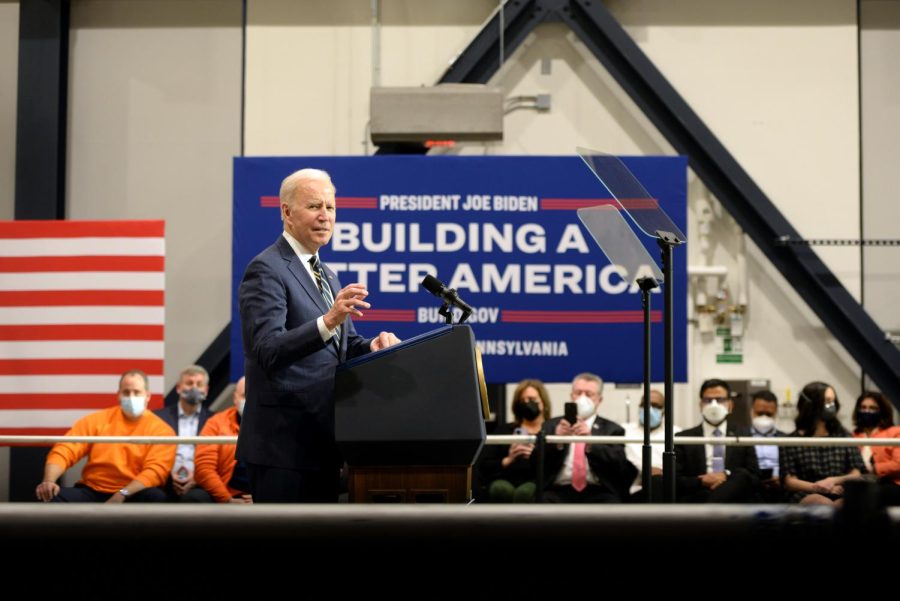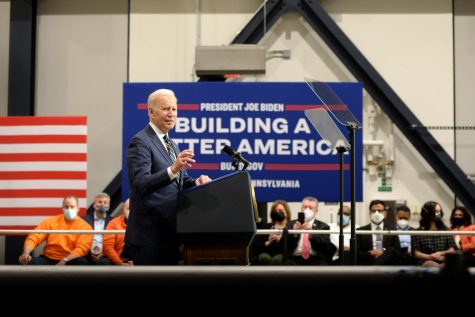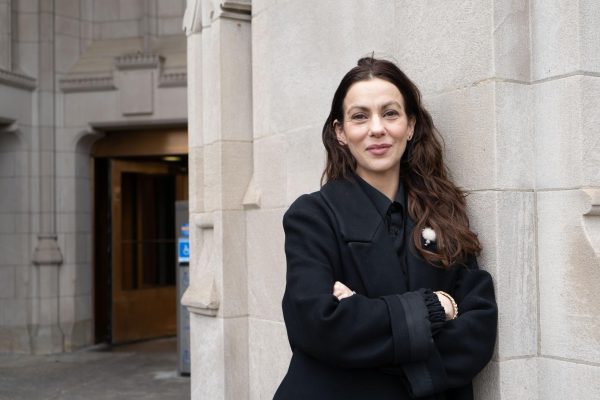Littman: Thanks to ESPN we now know the NBA’s greatest problem
December 9, 2009
Last Sunday, ESPN’s “Outside the Lines” aired a segment about the rapid decline of white… Last Sunday, ESPN’s “Outside the Lines” aired a segment about the rapid decline of white American players in the NBA.
It was a chilling nine minutes during which ESPN chronicled the current white American NBA player, a species soon-to-be as prevalent as unicorns riding on minotaurs fighting the Stay Puft Marshmallow Man, whose ghost-white skin would give him trouble making an NBA squad if he were so inclined to try out.
It’s great that ESPN did a groundbreaking report on this. I, for one, was not aware of this epidemic until watching the segment, and now it’s all I can think about while watching NBA games. Of course, race shouldn’t play a part in how enjoyable a sport is, but it’s hard not to take notice when the only things white on the court are referees, the trim of sneakers and the NBA logo. ESPN is right in assuming that I, like all white Americans who watch the NBA, no longer know who root for because nobody looks like us. It’s awful.
During the segment, ESPN’s Jeremy Schaap read off stats compiled by the “Outside the Lines” crack research team. The makeup of the current NBA is 71.8 percent African-American, 18.3 percent international players and 9.9 percent white American.
There hasn’t been a white American all-star since gritty Brad Miller made the Western Conference All-Star team in 2004. There hasn’t been a white starter in an All-Star game since John Stockton started for the West in 1997. Last year, only two white Americans finished in the top 100 scorers in the league: David Lee of the Knicks (48th) and the Pacers’ Troy Murphy (59).
The “Outside the Lines” segment talked to a few people from the basketball world to try and find out why white Americans can’t succeed in the NBA anymore. It seems the most prevalent answer is because white Americans are generally slow and not athletic enough to keep up with the current pace of NBA games.
That’s ridiculous. Well, not the slow and unathletic part, of course. As we all know thanks to Woody Harrelson and Wesley Snipes, white males experience trouble when trying to elevate themselves, specifically when trying to do so on a basketball court.
But it’s ridiculous that success in the NBA is now based off speed, strength and highlight-reel plays. It’s just like playing out on a blacktop, when in the good old days basketball was an exquisite game played in a gym at a country club. A game of short-shorts exposing milky white thighs, bounce passes and mid-range jumpers.
But now NBA players do things the average person couldn’t even dream of. Basketball isn’t a game of beauty through its simplicity anymore, it’s a constant reminder of one’s athletic shortcomings. I don’t want that watching the NBA. I want to see 10 me’s.
The segment opened with former Notre Dame point guard Kyle McAlarney working out in a gym. He’s taking jump shots and doing some running drills. You know, working on his fundamentally sound game. McAlarney was one of the best 3-point shooters in Notre Dame history and averaged more than 15 points a game his last two seasons there. Yet he wasn’t drafted by an NBA team.
“I think you would sign me right away if you didn’t know my color,” McAlarney said during the segment.
Of course, while people were solely focused on McAlarney’s skin color and birthplace, they probably missed his inability to guard people and penchant for getting overpowered by opposing guards. They probably didn’t notice when he was kicked off the team for most of his sophomore season after he was charged with possession of marijuana. But even if he was drafted, someone would’ve eventually uncovered such a hard-to-find nugget about his career, and he would’ve been unfairly labeled as someone with off-the-court issues, just because of his race.
Even with all of that, McAlarney is still trying to make his dream come true. He’s currently playing in a developmental league for the Fort Wayne Mad Ants.
“I’m fighting a pretty big monster right here,” McAlarney said. “I’m trying to pave the way for myself, but not only for myself, [but] for guys like me.”
Right on. Although, perhaps he meant re-pave, because the NBA used to be white. Really white. There would’ve been no point in paving a road that already looked like a cloud.
While it seems like in recent years the numbers of black players has remained steady, the number of international players has increased considerably. It’s clear these guys are the ones taking spots formerly held by white Americans. Overseas players can turn pro in their mid-teens, opposed to here where you have to be 19 to play in the NBA. College players here also have NCAA rules about how much time they can practice and spend with coaches.
So it’s clear to me that this is an NBA conspiracy to keep the white American basketball player down. But no matter what you think the reason is, there are no more white American star NBA players (Steve Nashis Canadian, unfortunately), there’s one thing we can all agree on.
We must thank “Outside the Lines” for bringing this dark time for the NBA to the light. Without the tireless reporting of Schaap and his co-workers, we’d still have no idea the NBA has so very few white players nowadays.







